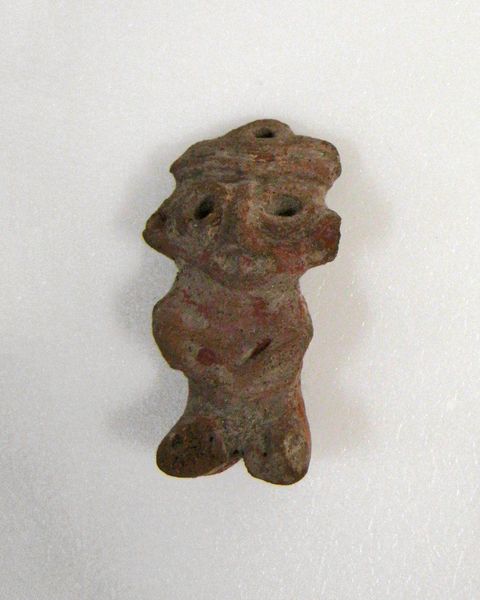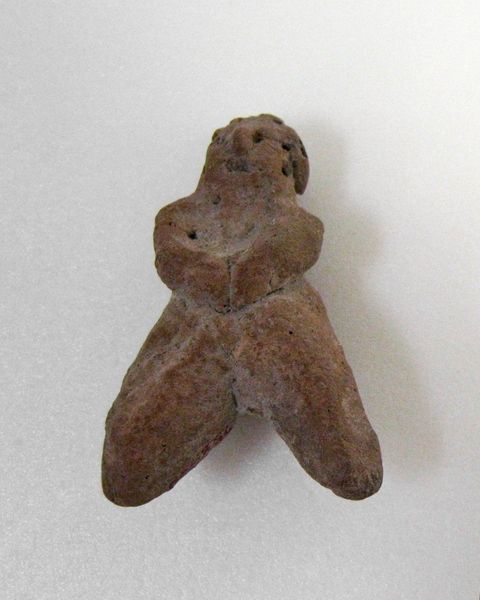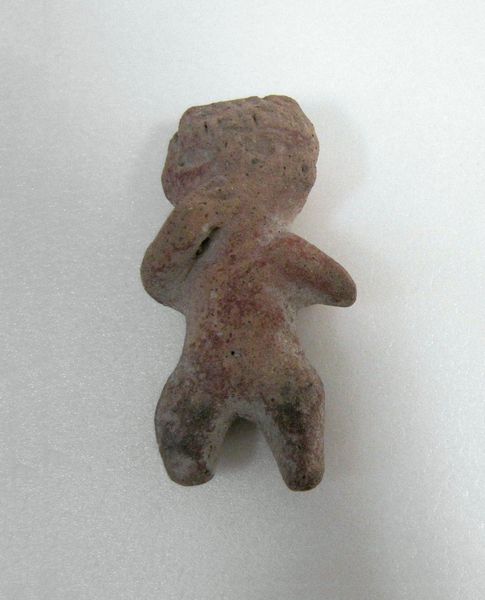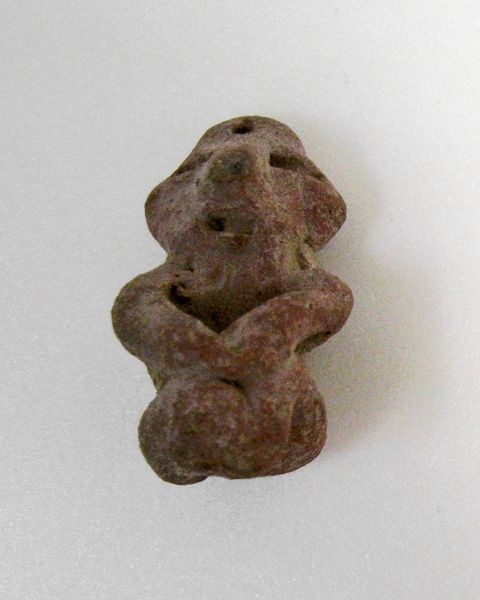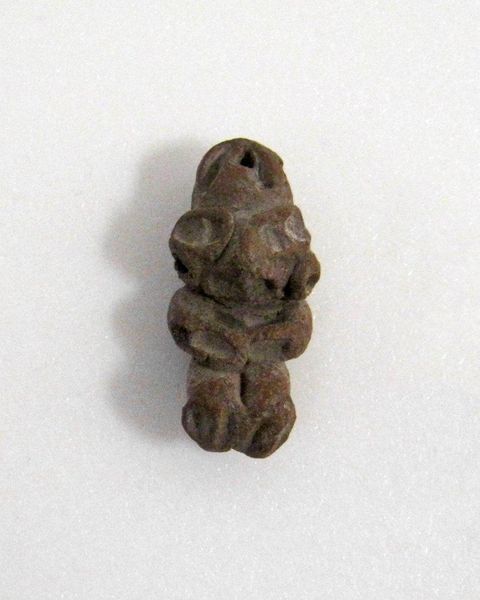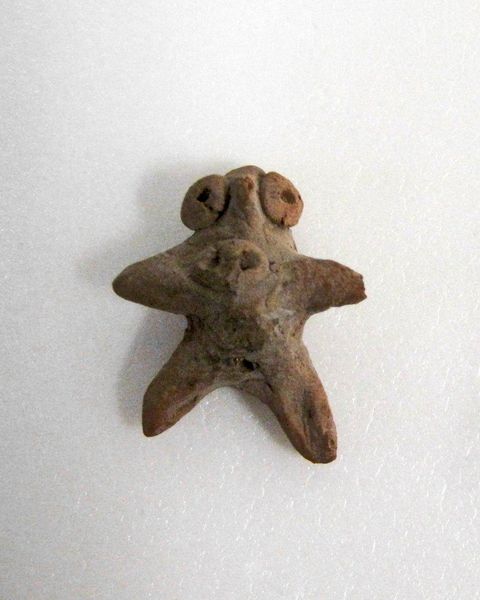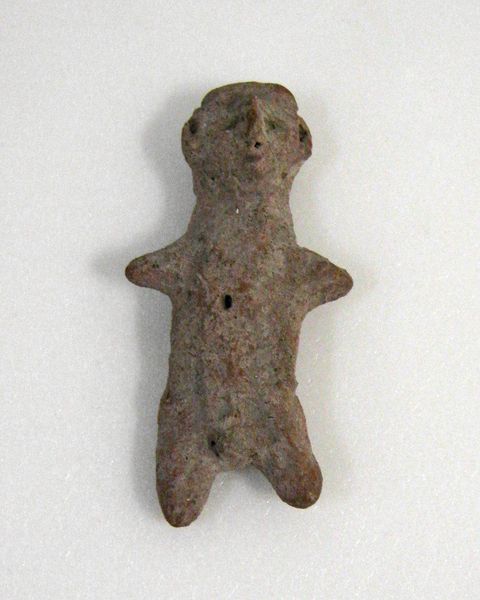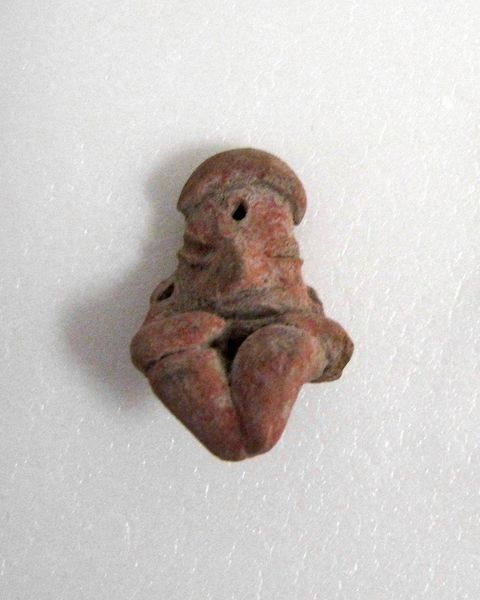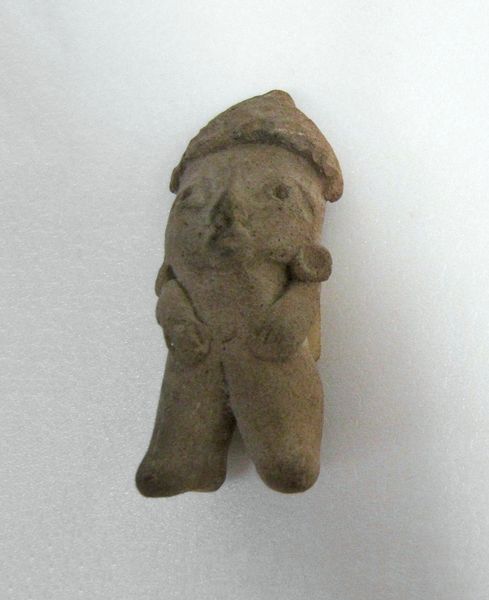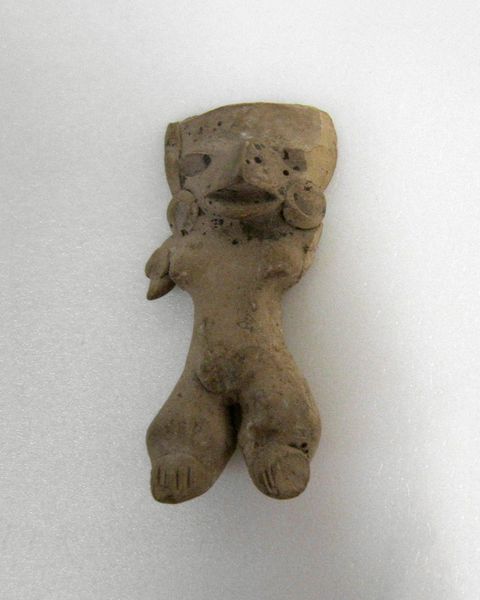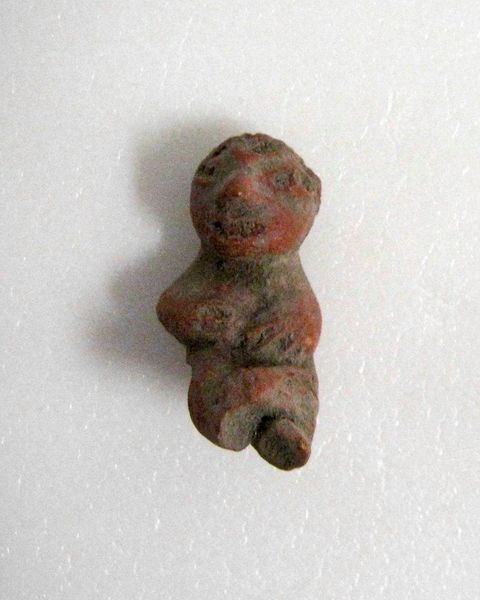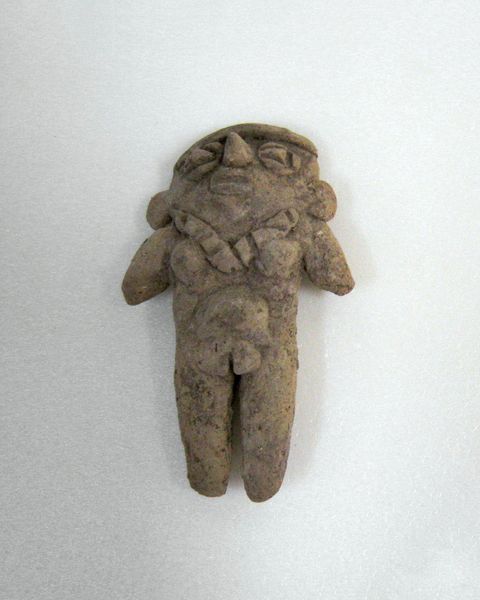
ceramic, earthenware, sculpture
#
sculpture
#
ceramic
#
figuration
#
earthenware
#
sculpture
#
miniature
#
indigenous-americas
Copyright: Public Domain
Editor: This miniature ceramic figurine, a Tlatilco sculpture from around 1500, is currently housed in the Minneapolis Institute of Art. It’s so small and unassuming, yet there’s a real sense of ancient ritual about it. What do you make of its place in history? Curator: Well, it's crucial to consider the socio-cultural context in which it was created. The Tlatilco people, residing in the Valley of Mexico, produced many of these figurines. They weren't mere decorations; rather, they played significant roles in their society. Think about where these objects were found, mostly in burial sites. What does that suggest? Editor: That they were used in burial rituals, perhaps offerings to the dead, or symbols of status in the afterlife? Curator: Precisely. These figurines tell us about Tlatilco beliefs, especially concerning fertility and the cycle of life and death. The public display of these objects now, in a museum, presents a stark contrast to their original private, sacred purpose. Does the display perhaps sanitize the ritual meaning, or does it create opportunities for cross-cultural dialogue? Editor: I see what you mean. In a museum, its artistic merit is foregrounded, whereas in its original context, its spiritual function was primary. So, its meaning shifts depending on its setting and reception. I hadn’t thought about it that way before. Curator: Exactly, museums play a vital role in shaping the narratives surrounding these artifacts. We mediate the past. The power of imagery and where and how it’s shown has to be critically evaluated. What have you learned about pre-Columbian art through this exercise? Editor: I learned that art objects carry different social meanings over time depending on how the objects are being framed, used and displayed. Curator: Indeed, context is everything.
Comments
No comments
Be the first to comment and join the conversation on the ultimate creative platform.
